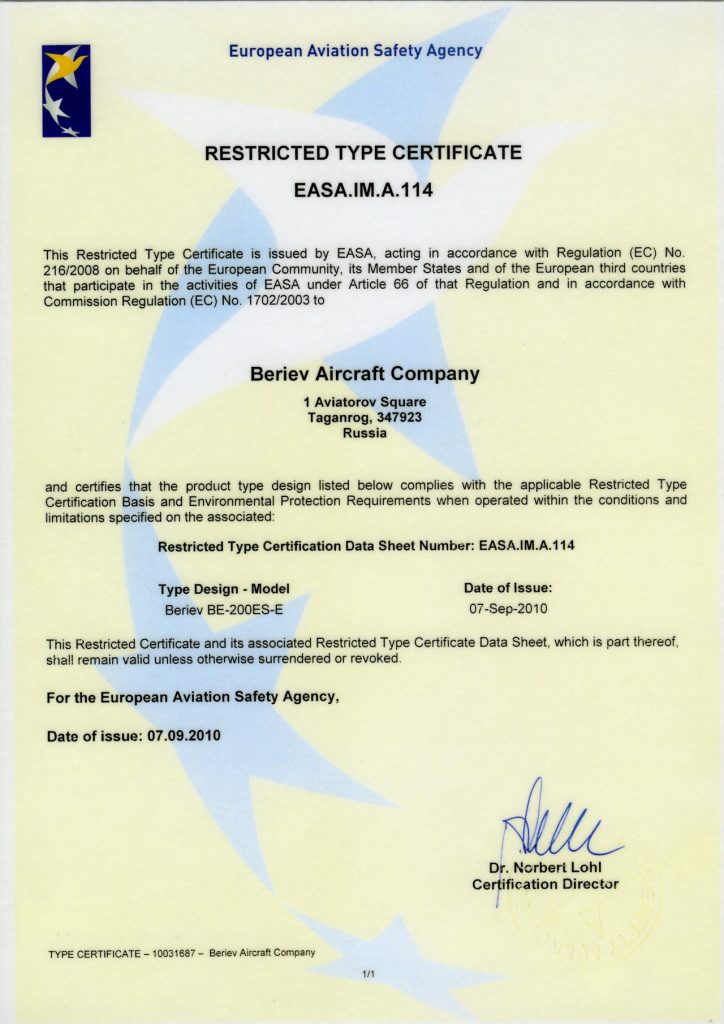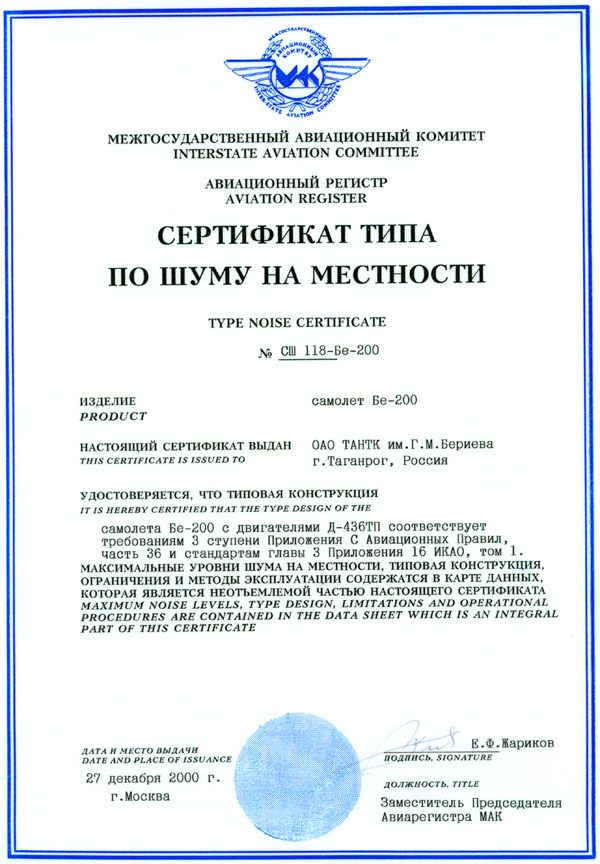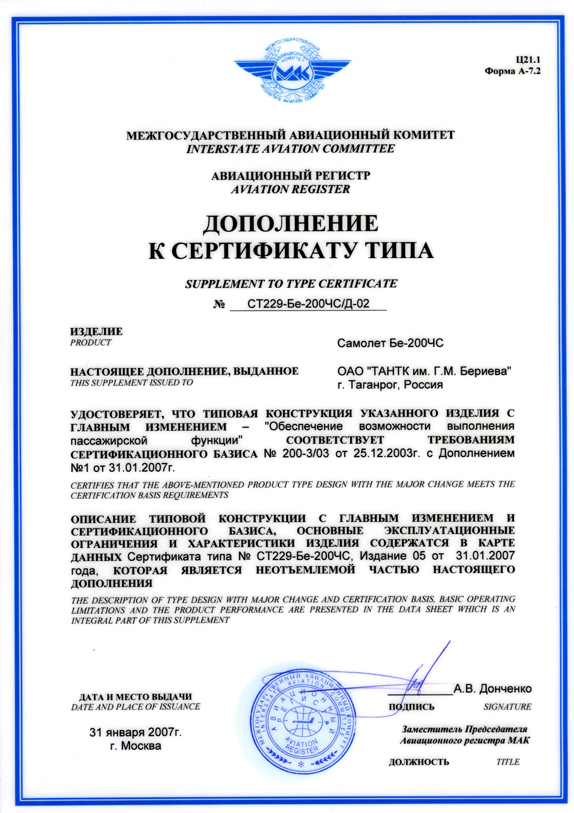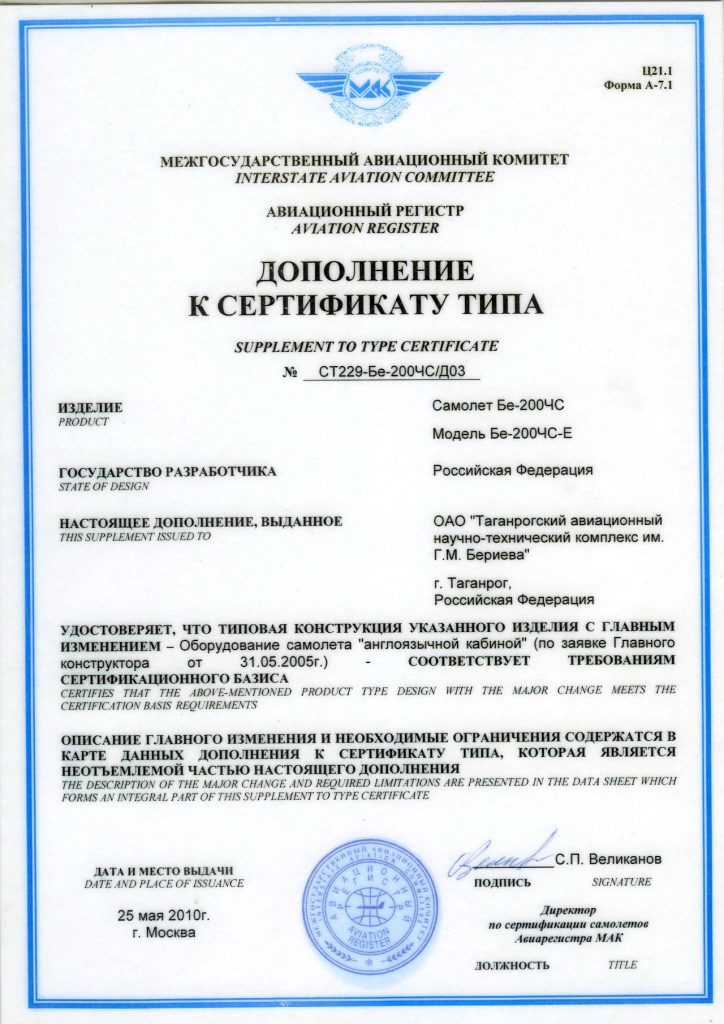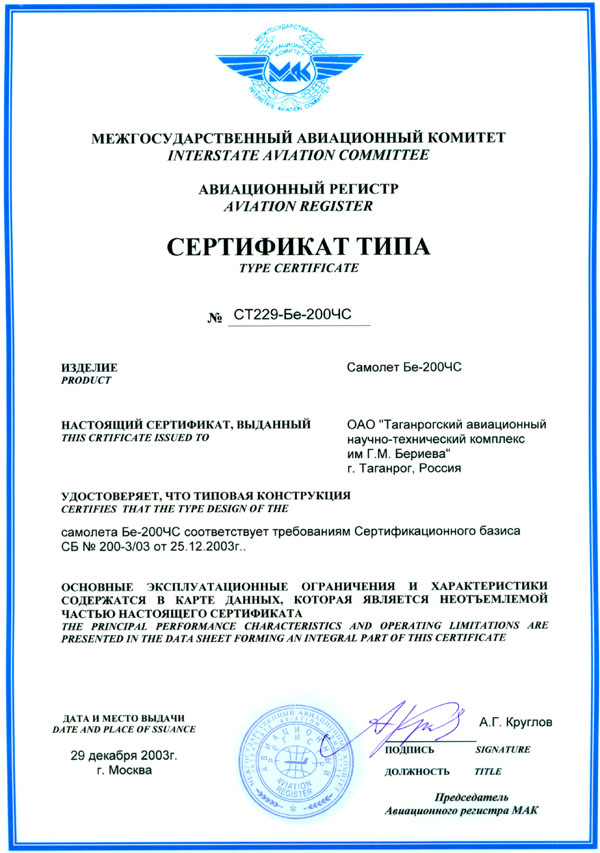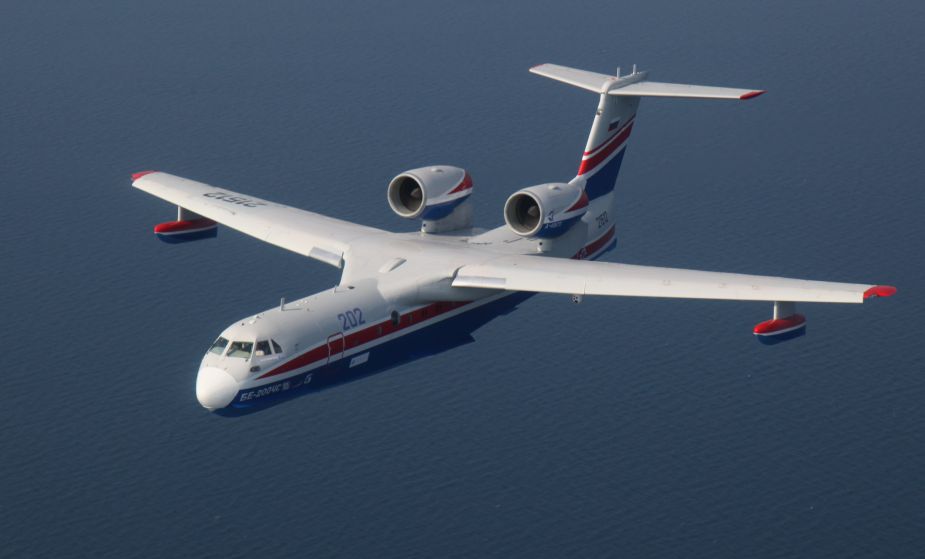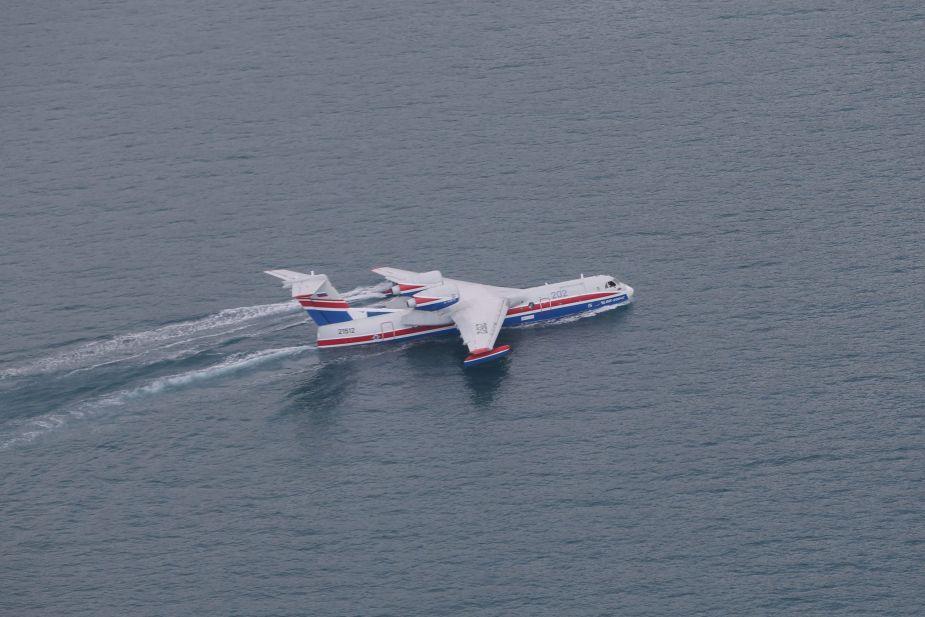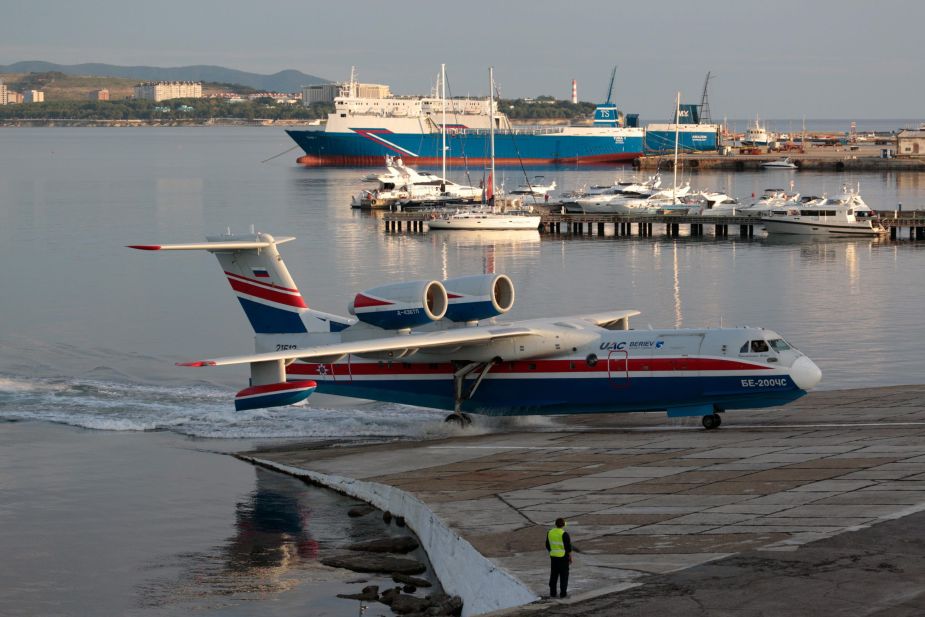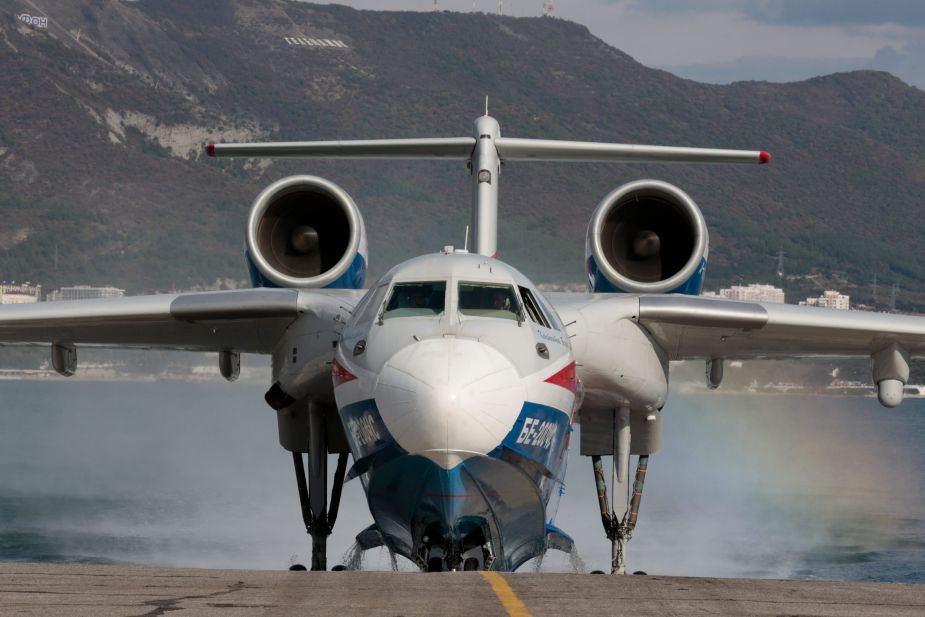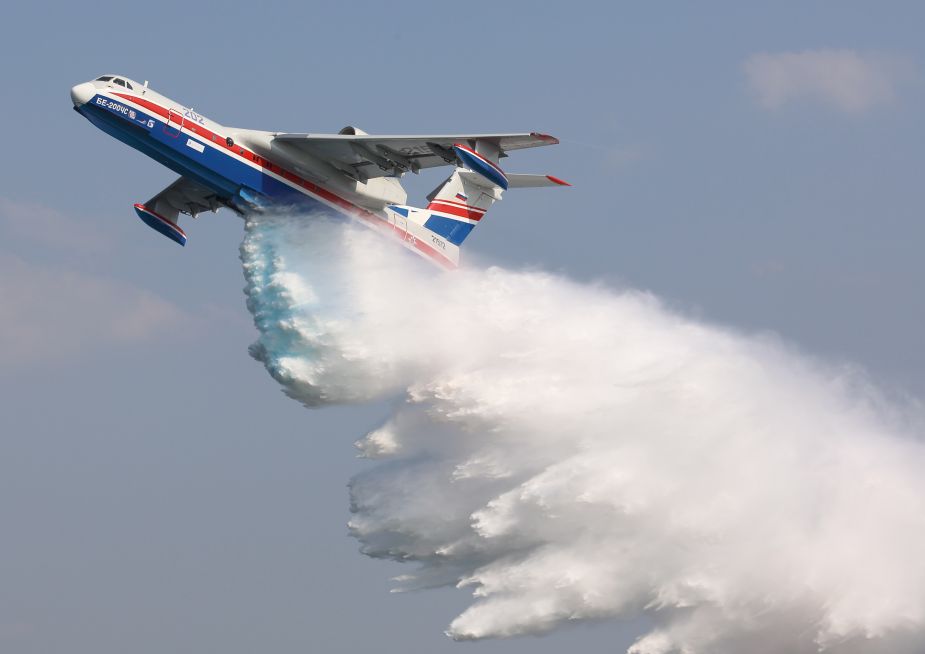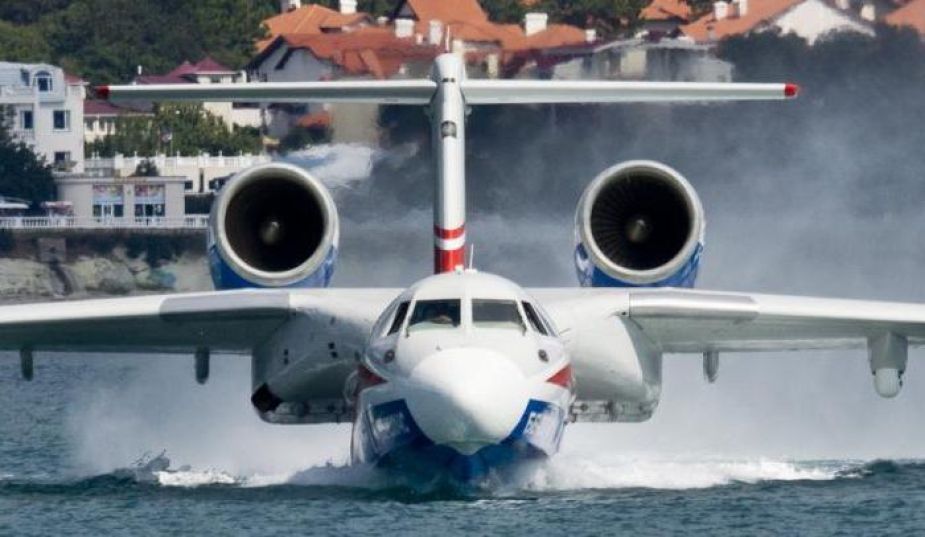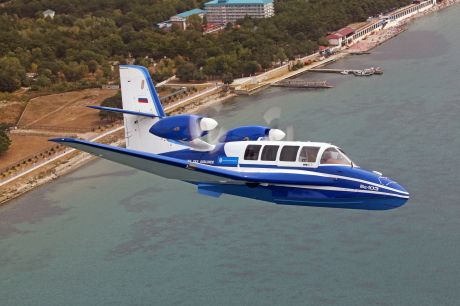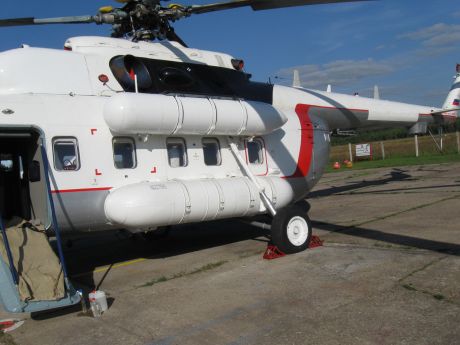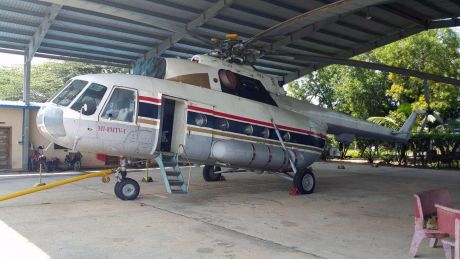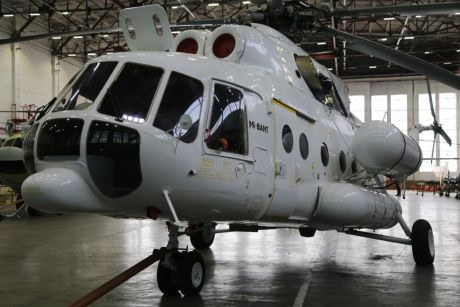- Продажа
- Аренда
- Оборудование
- Услуги
- Менеджмент воздушного судна
- Обеспечение полетов
- Консалтинг и Аудит
- Коммерческая загрузка
- Техобслуживание
- ТО и ремонт двигателей
- Ремонт интерьеров ВС
- Доработка по бюллетеням завода-изготовителя
- Поддержание летной годности ВС
- Взвешивание и определение центровки ВС
- Поставка АТИ и запасных частей
- Модернизация ВС
- ТО и ремонт компонентов
- Страхование
- Дополнительные услуги
- Новости
- Наш флот
- Контакты
Beriev Be-200 amphibious aircraft (2022)
$ 70 000 000
| Base data | |
| Type: | Jet |
| Make: | Beriev |
| Model: | Be-200 amphibious aircraft |
| Year built: | 2022 |
| Attributes: | IFR certified IFR equipped Always hangared Commercially registered EU-OPS 1 registered |
| Location: | Russia, Moscow, ZIA |
| Total Time (TTAF): | 1 h |
| Price: | US$ 70,000,000 |
| Engine(s) | ||
| Number of engines: | 2 | |
| Make/Model: | D436-TP | D436-TP |
| Power: | 16,534 lbf | 16,534 lbf |
| Description/Details of engines |
| The D-436 engine was developed as a follow on to the Lotarev D-36. The engine took several of its design features from that engine and another Progress engine, the Progress D-18. The D-436 incorporated an updated, higher RPM fan, a lower emissions combustor, and new compressor sections. Several variants of the engine incorporate a FADEC. The «TP» variant is a specific «maritime» corrosion-resistant version developed for use in the Be-200 amphibious aircraft. This variant produces 7,500 kgf (16,534 lbf) each. General characteristics Type: Three-spool high bypass turbofan Length: 3,030 mm (119 in) Diameter: 1,390 mm (55 in) Dry weight: 1,450 kg (3,200 lb) Components Compressor: Axial flow, 1-stage 33-blade fan, 6-stage IP, 7-stage HP Turbine: Single-stage HP, single-stage IP, 3-stage LP Performance Maximum thrust: 75.02 kN (7,650 kgf); (16,859 lbf) Overall pressure ratio: 21.9 : 1 Turbine inlet temperature: 1,197 C (2,186 F) Specific fuel consumption: 61 kg/kN/h (0.608 lb/lbf*hr) Thrust-to-weight ratio: 5.6 |
| Avionics |
| We accept applications for the production of model Be-200 aircrafts. |
| Equipment |
| The up-to-date ÀRIÀ-200Ì integrated avionics system provides navigation and flight control in adverse weather conditions, anywhere in the world, as well as at any time of the day and in any season – in compliance with ICAO Cat. III requirements. The system’s open architecture allows changes to be made to its configuration to suit the customer’s requirements. All information for the two-pilot crew is displayed on six multi-functional color LED electronic displays arranged on the instrument panel. Conventional instruments are used for back-up only in case of possible electronics failure. The Be-200 boasts high maneuverability and handling characteristics, which are vital for any fire-fighting aircraft. The Beriev Be-200 is the first airplane produced by BERIEV Aircraft Company to be fitted with an EDSU-200 three-channel fly-by-wire system. The crew compartment is equipped with “fighter” control sticks instead of conventional control wheels. A special fire-fighting system able to scoop water to tanks at skimming speeds of 0.9 — 0.95 of the take-off speed has been designed specifically for the Be-200. The Be-200ES version differs from the baseline version due to the availability of additional equipment. A new EDSU fly-by-wire system and SPU-200ES intercom system, AOS airborne observation system, SGU-600 external audible warning system and SX-5 floodlight have been installed. Seats for two observers are provided in the cargo cabin, which are fitted with teardrop windows for the visual search of targets, as well as an Orion-25S inflatable boat and cargo equipment. The walls and ceiling of the crew compartment are covered with decorative panels made by AIM Aviation (UK). |
| Interior |
| Firefighter, search and rescue aircraft, hospital aircraft . |
| Modifications/Conversions |
| Firefighter, search and rescue aircraft, hospital aircraft . The baseline design of Be-200 amphibious aircraft is intended for aerial wildfire-fighting using water or fire-extinguishing liquids. This includes the following objectives: • Stopping the spread, and containment, of moderate and large forest fires by creating a barrier with multiple drops of an extinguishing fluid at the edge of the fire; • The elimination of small and newly-started forest fires; • the delivery of firefighting teams and equipment to disaster areas with landing on a preselected water surface or airfield, and subsequent extraction. Additionally, the airplane can perform: • passenger transportation; • search-and-rescue work; • environmental monitoring; • patrolling of exclusive economic zones and sea boundaries. The Be-200 can be reequipped into the following versions quickly and with minimum cost: • transport airplane; • passenger airplane (Be-210); • search-and-rescue airplane; • medical evacuation airplane. All firefighting capabilities are retained. Work on a business-version design are underway. |
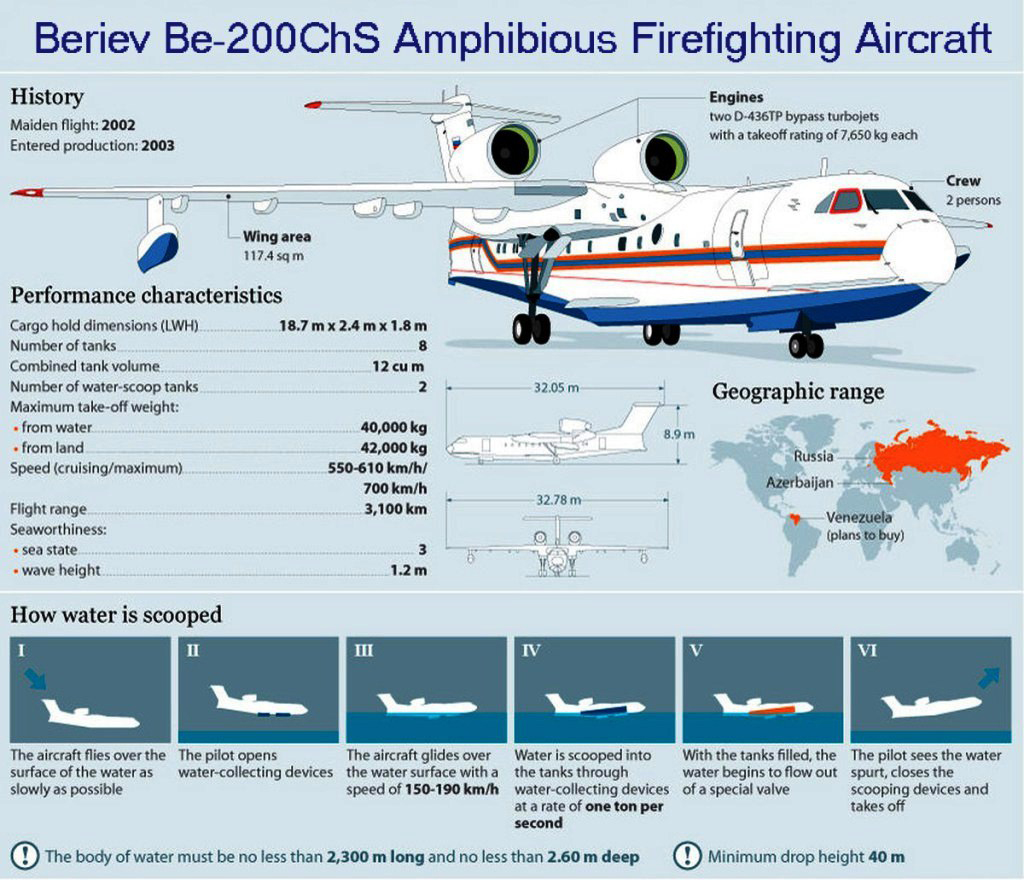
| Other remarks |
| The Be-200 can operate from Class B airfields with a runway length of 1,800 m and from a water surface at least 2,300 m long with a water body depth of at least 2.5 m. The airplane can take off and land on water with a wave height of up to 1.3 m, and special anti-corrosion treatments enable operation of this airplane in maritime conditions. In areas with underdeveloped ground infrastructure, the Be-200 may be deployed on a 130 x 70 m paved area equipped with a slipway. The Be-200’s detailed design was completed with consideration of FAR-25 airworthiness standards (USA), which will facilitate certification of the airplane in accordance with FAA and JAA standards. The Be-200ES-E is fitted to the requirements of the Russian Ministry of Emergency Situations, and is intended for the following main applications: • Fire suppression; • Delivery of search-and-rescue teams, required equipment and essential goods to disaster areas, with landing at the nearest airfield or water body; • Evacuation of survivors from disaster zones, search and location of ships and vessels suffering distress; • Finding the precise coordinates of disaster spots; • Classification of the detected objects, both visually and with the use of on-board equipment; • Carriage of fire teams and goods. There is currently no maintenance interval set for the airplane and it is maintained as condition requires. Its assigned service life is 30 years. |

